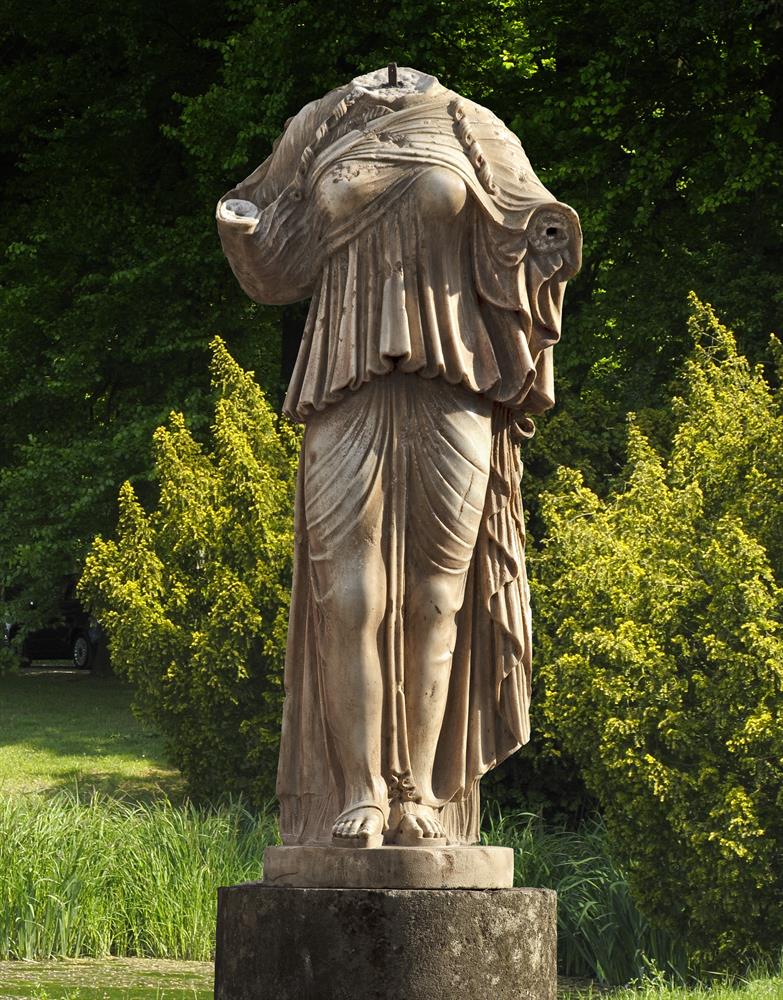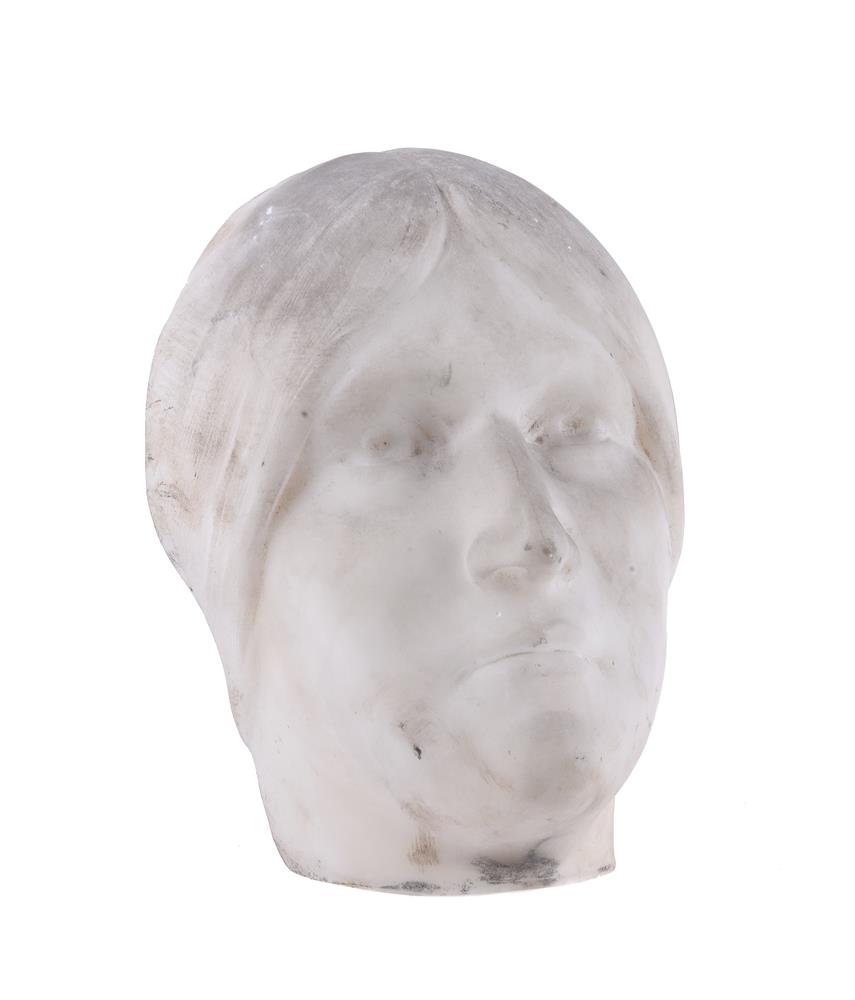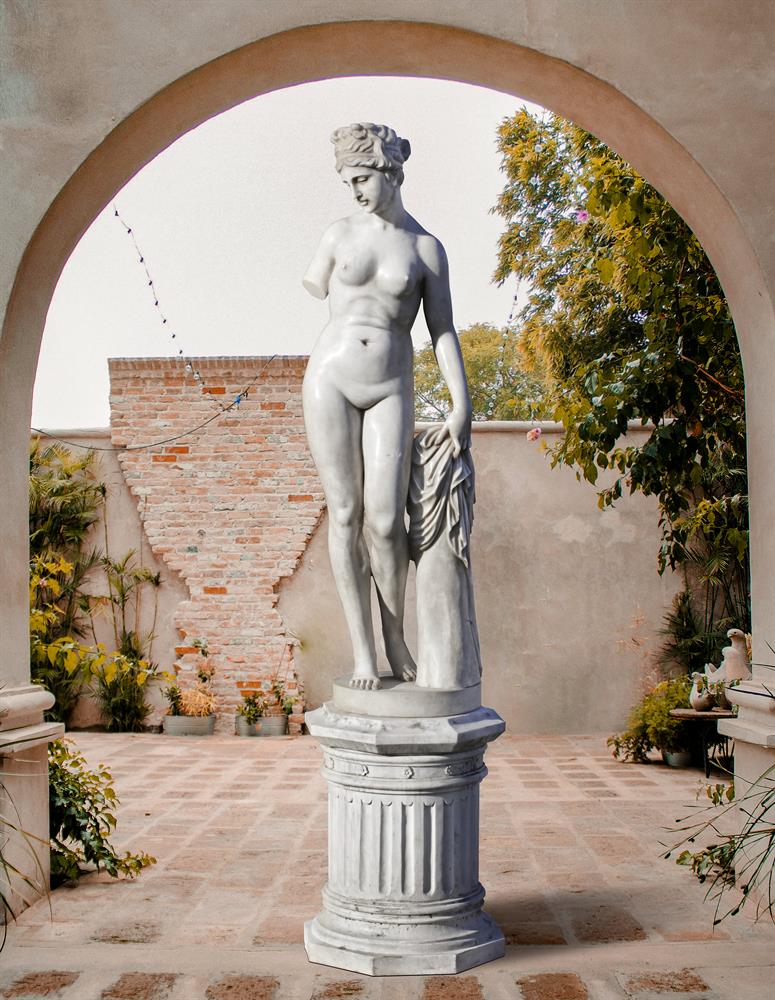A sculpted marble model after the 'Hope Isis', a 1st-2nd century AD archaistic marble of the Romano-Egyptian earth goddess, 20th century, the standing figure expertly and faithfully carved after the Antique, portrayed standing and wearing chiton and himation over her voluptuous form, the left breast exposed beneath the folds of her himation draped diaphanously, the head and forearms missing in the manner of the original, 155cm high Bidders from the UK and outside of the European Union should be aware that additional import charges may apply The famed 'Hope Isis' was originally secured by Sir William Hamilton the diplomat, antiquarian, archaeologist and vulcanologist, whilst serving as British Ambassador to the Kingdom of Naples. Hamilton could reasonably be described as having been obsessed with collecting antiquities and his buying habits nearly bankrupted him more than once. His collection was highly important though and he negotiated its sale in entirety in 1771 to the British Museum, but on his return to Naples he found it difficult to stop amassing further antiquities In 1798, as Hamilton's posting drew to a close he organised for the shipment of his replenished collection of antiquities and Magna Graecia vases back to England, (a small part of the second vase collection being lost when HMS Colossus foundered off the Scilly Isles). In financial trouble again, Hamilton attempted to negotiate for the sale of the surviving part of the second collection to the British Museum, but this time was unsuccessful. The compulsive collector was forced to have the whole collection catalogued for sale at Mr James Christie's auction house, when at the eleventh hour Thomas Hope (1769-1831) stepped in and purchased the lot. The Roman marble of Isis that the version offered here so finely reproduces was part of that collection On Hope's death ownership of the Isis passed through his family descendants, being offered for sale at Christie's again in July 1917, after which it graced various private collections before coming to auction one last time, this time at Sothebys New York in 2004. Comparative Literature: T.Hope, Costume of the Ancients, London 1809 C.M.Westmacott, British Galleries of Painting and Sculpture, London 1824 T.D.Fosbroke, Encyclopaedia of Antiquities, London 1825 Extensive further publications
A sculpted marble model after the 'Hope Isis', a 1st-2nd century AD archaistic marble of the Romano-Egyptian earth goddess, 20th century, the standing figure expertly and faithfully carved after the Antique, portrayed standing and wearing chiton and himation over her voluptuous form, the left breast exposed beneath the folds of her himation draped diaphanously, the head and forearms missing in the manner of the original, 155cm high Bidders from the UK and outside of the European Union should be aware that additional import charges may apply The famed 'Hope Isis' was originally secured by Sir William Hamilton the diplomat, antiquarian, archaeologist and vulcanologist, whilst serving as British Ambassador to the Kingdom of Naples. Hamilton could reasonably be described as having been obsessed with collecting antiquities and his buying habits nearly bankrupted him more than once. His collection was highly important though and he negotiated its sale in entirety in 1771 to the British Museum, but on his return to Naples he found it difficult to stop amassing further antiquities In 1798, as Hamilton's posting drew to a close he organised for the shipment of his replenished collection of antiquities and Magna Graecia vases back to England, (a small part of the second vase collection being lost when HMS Colossus foundered off the Scilly Isles). In financial trouble again, Hamilton attempted to negotiate for the sale of the surviving part of the second collection to the British Museum, but this time was unsuccessful. The compulsive collector was forced to have the whole collection catalogued for sale at Mr James Christie's auction house, when at the eleventh hour Thomas Hope (1769-1831) stepped in and purchased the lot. The Roman marble of Isis that the version offered here so finely reproduces was part of that collection On Hope's death ownership of the Isis passed through his family descendants, being offered for sale at Christie's again in July 1917, after which it graced various private collections before coming to auction one last time, this time at Sothebys New York in 2004. Comparative Literature: T.Hope, Costume of the Ancients, London 1809 C.M.Westmacott, British Galleries of Painting and Sculpture, London 1824 T.D.Fosbroke, Encyclopaedia of Antiquities, London 1825 Extensive further publications















Testen Sie LotSearch und seine Premium-Features 7 Tage - ohne Kosten!
Lassen Sie sich automatisch über neue Objekte in kommenden Auktionen benachrichtigen.
Suchauftrag anlegen